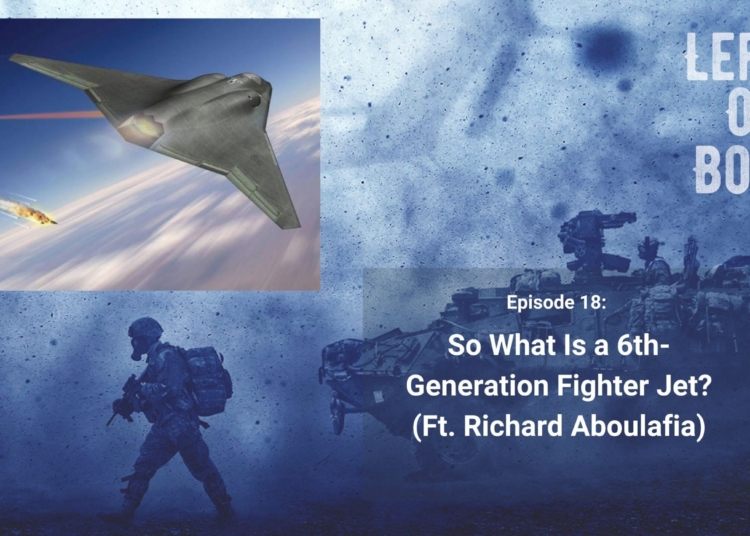The article discusses the future of airspace dominance with the emergence of hypersonic flight and supersonic weapons. It explores the advancements in materials, propulsion systems, and aerodynamics that enable hypersonic flight. It also discusses the advantages of supersonic weapons, including faster reaction times and increased operational flexibility. The article highlights the importance of advanced targeting and guidance systems for effective use of supersonic weapons. It mentions the challenges faced in countering supersonic weapons and the implications of these technologies for airspace dominance. The article concludes by emphasizing the need for research and development to harness the potential of these technologies while ensuring global security.
The Future of Airspace Dominance: Hypersonic Flight and Supersonic Weapons
Introduction
In the ever-evolving landscape of defense technology, achieving and maintaining airspace dominance remains a top priority for military forces around the world. With the emergence of hypersonic flight and supersonic weapons, a new era of air combat is on the horizon. This article explores the advancements in hypersonic flight and supersonic weapons technology, their potential applications, and the implications for future airspace dominance efforts.
Hypersonic Flight
Hypersonic flight refers to the ability to travel at speeds greater than Mach 5, or five times the speed of sound. Achieving hypersonic speeds presents unique challenges due to aerodynamic heating, control systems, and propulsion requirements. However, recent breakthroughs in materials, propulsion, and aerodynamics have opened up new possibilities for hypersonic flight.
Advancements in Materials
Developing materials capable of withstanding the extreme temperatures generated by hypersonic flight has been a critical focus for researchers. Materials such as carbon composites and ceramic-matrix composites have shown promise in overcoming the thermal challenges associated with hypersonic flight. These materials are designed to withstand temperatures exceeding 3,000 degrees Fahrenheit, allowing for sustained flight at hypersonic speeds.
Propulsion Systems
Traditional jet engines are not suitable for hypersonic flight due to their limited efficiency and inability to provide enough thrust. To overcome this limitation, researchers have been exploring alternative propulsion systems such as scramjets, ramjets, and rocket-based combined cycle engines. These engines utilize the oxygen already present in the atmosphere, eliminating the need to carry heavy onboard oxidizers. This makes hypersonic flight more fuel-efficient and enables extended flight durations at high speeds.
Aerodynamics and Control
Controlling and maneuvering at hypersonic speeds presents significant challenges due to the intense forces and extreme conditions encountered. Advanced control systems, including thrust vectoring and adaptive flight control, are being developed to enable precision navigation and maneuverability. Additionally, aerodynamic designs that reduce drag and improve stability are crucial for achieving efficient and controlled hypersonic flight.
Supersonic Weapons
Supersonic weapons are another critical component in the quest for airspace dominance. These weapons utilize advanced propulsion systems to travel at speeds exceeding the speed of sound, enabling rapid response times and increased operational flexibility. They can be utilized in a variety of scenarios, including air-to-air combat, air-to-ground strikes, and anti-ship warfare.
Advantages of Supersonic Weapons
Supersonic weapons offer several advantages over their subsonic counterparts. Their high speed enables faster reaction times and reduces the window for enemy defenses to respond. They can also cover larger distances in shorter timeframes, enhancing their effectiveness in long-range engagements. Additionally, supersonic weapons can deliver kinetic energy that surpasses the destructive power of traditional weapons, posing a significant threat to enemy targets.
Targeting and Guidance Systems
To maximize the effectiveness of supersonic weapons, advanced targeting and guidance systems are crucial. These systems utilize advanced sensor technologies, such as radar and infrared sensors, to identify and track targets accurately. Additionally, sophisticated guidance algorithms and data processing technologies ensure precise target engagement and minimize collateral damage.
Countermeasures and Challenges
The emergence of supersonic weapons also presents new challenges for defense systems. Traditional missile defense systems may struggle to intercept supersonic weapons due to their higher velocities. This necessitates the development of more advanced and agile defense systems capable of neutralizing the threat. Moreover, the ability to effectively counter supersonic weapons further underscores the need for nations to maintain and enhance their airspace dominance capabilities.
Implications for Airspace Dominance
The development and deployment of hypersonic flight and supersonic weapons will have profound implications for airspace dominance. These technologies offer increased speed, agility, and operational flexibility, allowing military forces to respond rapidly to emerging threats and maintain a strategic edge. Additionally, the ability to penetrate enemy defenses at hypersonic speeds significantly disrupts traditional air defense strategies, rendering them less effective.
Strategic and Tactical Applications
Hypersonic flight and supersonic weapons provide new strategic and tactical options for military commanders. The ability to deploy hypersonic platforms enables rapid reconnaissance, intelligence gathering, and strategic strike capabilities, enhancing situational awareness and the effectiveness of military operations. Supersonic weapons, on the other hand, offer enhanced precision and penetration capabilities, ensuring successful target engagements with minimized collateral damage.
Arms Race and Global Security
As nations continue to invest in hypersonic flight and supersonic weapons technology, an arms race may ensue, further intensifying global security concerns. The development and proliferation of these advanced technologies raise questions about escalation risks, arms control agreements, and potential destabilization of international power dynamics. Maintaining a delicate balance between maintaining airspace dominance and ensuring global security will be a significant challenge for policymakers and defense strategists in the coming years.
Conclusion
The future of airspace dominance lies in the realm of hypersonic flight and supersonic weapons. These technologies offer unprecedented speed, agility, and striking capabilities, challenging traditional air defense strategies and reshaping the future of military operations. With ongoing advancements in materials, propulsion systems, and guidance technologies, the era of hypersonic flight and supersonic weapons is rapidly approaching. It is crucial for nations to invest in research and development to harness the potential of these technologies while addressing the associated challenges and ensuring global security.












